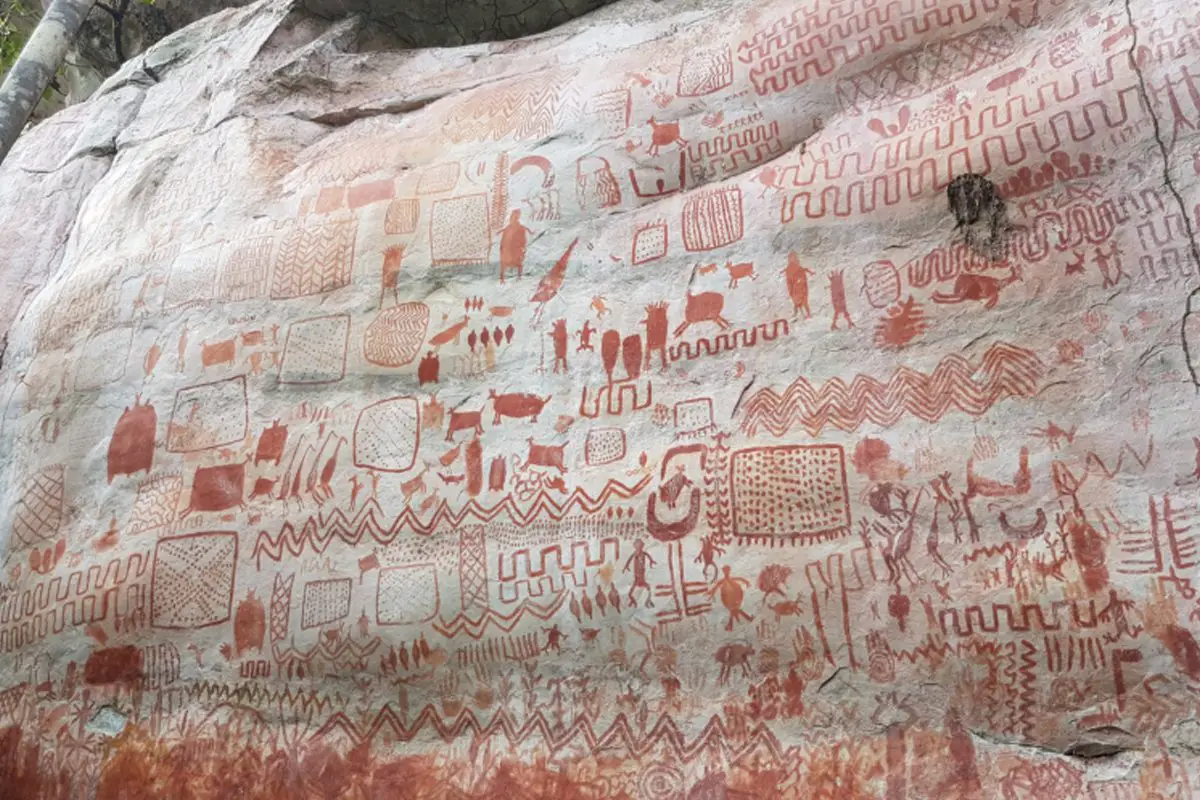Latin America
Related: About this forumUE archaeologists conduct study of Amazonian cave homes

Image Credit : University of Exeter
By:
Mark Milligan
Date:
February 7, 2024
Researchers from the University of Exeter have conducted a study of the shallow cave homes in the Amazon Basin.
The study focused on rock shelters in northwest Colombia, which were occupied by some of the earliest people to migrate to South America during the late Pleistocene era approx. 13,000-years-ago.
The study, part of the €2.5m European Research Council funded LASTJOURNEY project has provided new insights into the colonisation of the Amazon interior and the types domestic and ritual activity at cave shelter sites. The cave inhabitants painted vibrant artworks on the cave galleries using ochre they prepared from a mixture of ferric oxide and varying amounts of clay and sand. They also fashioned stone tools, managed plant resources, and hunted a wide range of Amazonian animals.
“The ‘peopling’ of South America represents one of the great migrations of human history – but their arrival into the Amazon biome has been little understood,” says Mark Robinson, Associate Professor of Archaeology at the University of Exeter.
“For researchers working in the field, dense rainforest makes it challenging to identify potential fieldwork sites, and acidic, clay-based soils impair the preservation of organic remains. Our recent excavations, however, help to fill this gap, not only dating their arrival to much earlier than previously understood, but also providing novel insights into their lives and historical trajectories during the Holocene,” added Professor Robinson.
The study, published in the Quaternary Science Reviews, focused on two rock shelters in the Serranía La Lindosa region on the fringes of the Amazon and Orinoco basins.
The UE team excavated soil sediments from within the shelters and the area directly outside, which were subjected to a geochemical and stratigraphic analysis. The analysis revealed traces of stone fragments, charcoal, and organic matter, indicating food preparation, consumption and disposal, in addition to periods of abandonment over more than a millennia. Moreover, the presence of ceramics dating back approximately 3,000 years, signs of soil cultivation from 2,500 years ago, and remnants of maize cultivation 500 years ago have all been unearthed.
More:
https://www.heritagedaily.com/2024/02/ue-archaeologists-conduct-study-of-amazonian-cave-homes/150474
Easterncedar
(3,522 posts)I wish I had a more powerful word.
Judi Lynn
(162,377 posts)Archaeologists Discover Thousands Of Ancient Cave Paintings Deep Withing The Amazon Rainforest
Published 3 years ago
If you think that so far 2020 has been nothing but a never-ending series of bad news, today we have something that will change your mind. Just a few days ago, a team of archaeologists led by José Iriarte discovered tens of thousands of perfectly preserved cave paintings on an 8-mile stretch of cliff deep within the Amazon rainforest, and if that’s not the good news you were looking for, we don’t know what is.
The cave paintings, dating back around 12,500 years, feature images of various animals, including long-extinct ones, such as giant sloths, camelids, and mastodons. Dr. Mark Robinson, a professor at the University of Exeter and part of the research team, said that the images were produced by the earliest people to live in western Amazonia. “It is unbelievable to us today to think they lived among, and hunted, giant herbivores, some which were the size of a small car,” said the professor.
Archaeologists recently discovered thousands of perfectly preserved cave paintings deep within the Amazon rainforest

Image credits: channel 4

Image credits: gipri

Image credits: gipri
Some people have even nicknamed the newly-found the “Sistine Chapel of the ancients”. Even though its location is currently kept secret, Channel 4 has recently filmed it for a series titled Jungle Mystery: Lost Kingdoms of the Amazon that will air sometime in December.
The images date around 11,800 – 12,500 years

Image credits: gipri

Image credits: gipri

Image credits: gipri
The team that discovered the paintings featured British and Colombian researchers, including José Iriarte, a professor of archaeology at Exeter University. “When you’re there, your emotions flow … We’re talking about several tens of thousands of paintings,” said the professor. “It’s going to take generations to record them … Every turn you do, it’s a new wall of paintings.”
The drawings feature various animals, including long-extinct ones

Image credits: gipri
More:
https://www.demilked.com/prehistoric-paintings-found-in-amazonia/
![]()